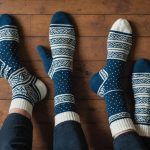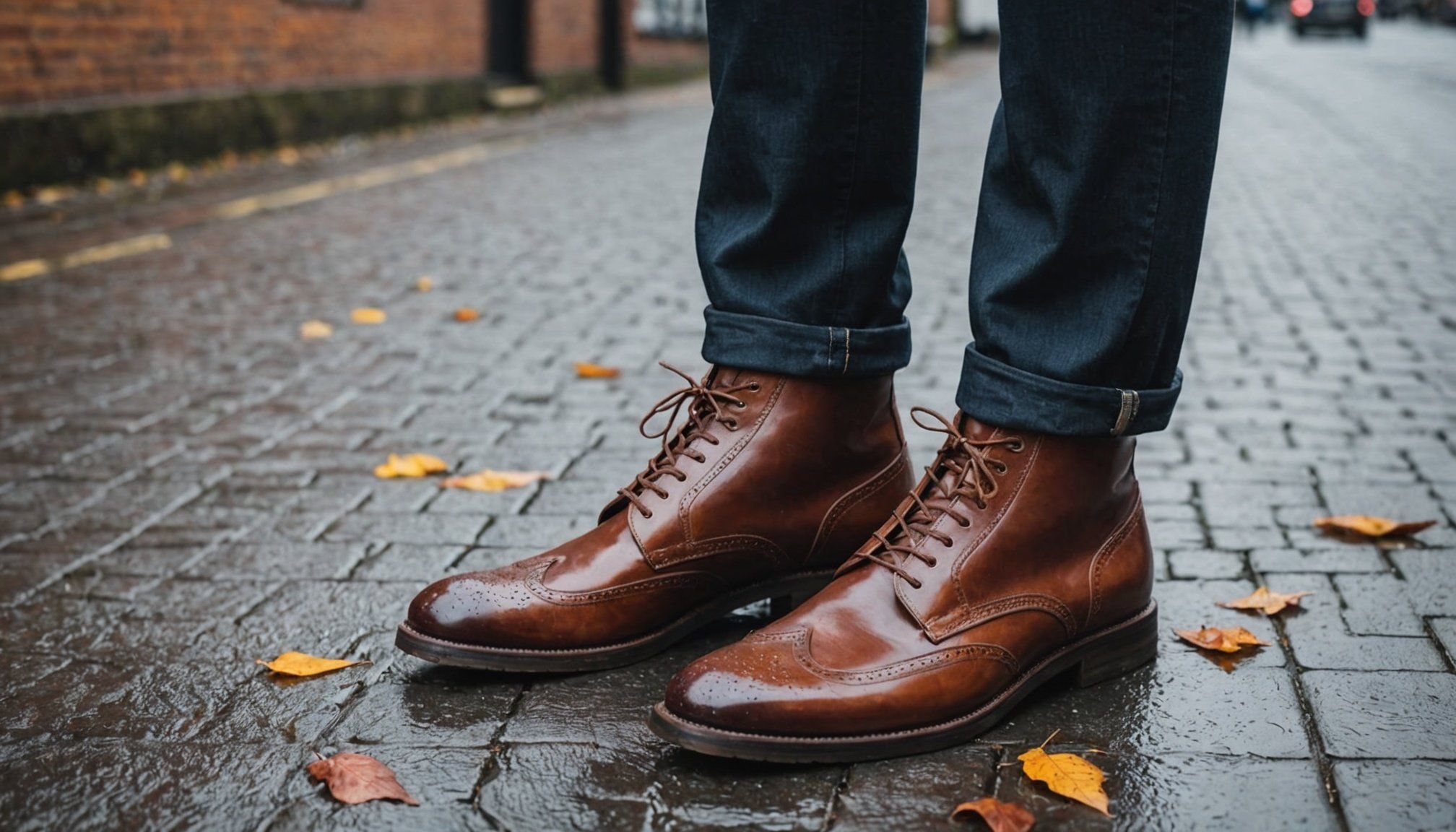Understanding the Impact of Wet Weather on Leather Shoes
Leather shoes maintenance becomes particularly challenging during wet weather conditions. When rain strikes, leather shoes can suffer from several common issues such as water stains, stretching, and even mold growth if not properly cared for. The importance of choosing the right leather for wet weather cannot be understated. Certain leathers are inherently more resistant to moisture, like full-grain leather or those treated with waterproof coatings.
Neglecting wet leather care can lead to significant long-term consequences. Moisture seepage can cause irreversible damage, weakening the shoe’s structure and reducing its lifespan. Over time, consistent exposure to wetness without correct moisture damage prevention can result in the leather hardening and cracking.
In the same genre : Discovering the Ultimate Moisturizer for Mature Combination Skin: An In-Depth Handbook
Choosing the appropriate leather type for your environment is a proactive step. Often, incorporating waterproof treatments or investing in shoes specifically designed for damp conditions offers added protection. Regular inspection and prompt actions—like drying and conditioning—preserve leather’s integrity. Thus, understanding the potential impacts and taking preventive measures ensures your favorite leather shoes withstand the elements gracefully.
Common Issues and Solutions for Leather Shoes in Wet Weather
In wet weather, leather shoes can face numerous common shoe problems. Such issues include water stains, mould formation, and leather distortion. These are all direct results of exposure to moisture. Addressing these problems promptly is imperative to maintain the shoes’ condition.
Also to see : Casual Elegance: Expert Tips for Perfecting Weekend Blazer Style
Fixing water damage begins with gently wiping off excess moisture from the leather’s surface using a dry cloth. If stains persist, apply a solution of equal parts water and white vinegar, dab the area lightly, and let it air dry.
When addressing mold issues, act quickly. Mix a small amount of water with rubbing alcohol and gently clean the mold spots. This helps prevent further growth and restores the shoe’s appearance.
If home remedies do not suffice, knowing when to seek professional help for repairs is crucial. Severe wet weather damage, like extensive cracking or irreparable stains, often requires expert attention. Professional services reinstate the shoes’ functionality and aesthetic appeal, ensuring they remain in optimal condition.
By identifying and remedying these issues, you can ensure your leather shoes withstand the challenges posed by wet conditions efficiently, maintaining their longevity and appearance.
Essential Cleaning Techniques for Leather Shoes
Cleaning leather shoes properly in wet weather is vital. Begin by gently removing excess moisture with a soft cloth. Avoid vigorous rubbing to prevent damage. Cleaning leather shoes effectively requires patience and the right materials.
For persistent stains, a careful application of a water and vinegar solution is recommended. Mix equal parts in a bowl, then dab gently on the stained areas, allowing the shoes to air dry naturally. It’s crucial to avoid heat sources like radiators or direct sunlight as they might damage the leather.
Selecting safe cleaning products is essential. Opt for mild soap or dedicated leather cleaner to preserve the shoe’s finish. Apply these using a soft sponge or brush, ensuring you cover all areas evenly.
Incorporating these wet weather cleaning methods can maintain your leather shoes’ appearance and longevity. If the shoes are leather-lined, pay extra attention to the lining’s cleanliness. Ensure it dries thoroughly to prevent odours and further wear.
By understanding and practicing the right techniques, you protect your investment and enjoy the comfort and style of your favourite leather shoes for years to come. Regular cleaning not only enhances maintenance but also strengthens the leather against future moisture exposure.
Effective Drying Methods for Leather Shoes
Properly drying leather shoes is crucial to prevent mold and damage. When shoes get wet, quick moisture removal is key. Gently wipe off excess water with a soft, absorbent cloth. Avoid using artificial drying tools like hair dryers, as they can cause leather to crack by removing essential oils.
Opt for natural drying methods by placing shoes in a well-ventilated area at room temperature. Stuffing shoes with newspaper can help absorb moisture and maintain shape. It’s essential to replace the newspaper every few hours until completely dry.
Consider the use of shoe trees, which not only assist with drying but also help retain the shoe’s form. When choosing the environment for drying, ensure it’s away from direct heat sources, which can lead to leather warping and shrinkage.
The recommended drying time can vary depending on the shoe’s material and level of wetness. Patience is required as rushing this process can lead to further damage. Typically, allow at least 24 hours, occasionally longer depending on conditions. By adhering to these techniques, you’ll prolong the life of your leather shoes and maintain their aesthetic appeal, ensuring they continue to provide comfort and style despite adverse weather conditions.
Protecting Leather Shoes from Rain and Moisture
In the battle against wet weather, waterproofing leather shoes effectively is crucial for prolonging their lifespan. Numerous protection sprays are available on the market, each designed to create a moisture barrier on leather surfaces. These sprays work by forming a protective layer that prevents water penetration, thereby reducing the risk of damage. When selecting a waterproofing spray, it is essential to choose one that is compatible with your shoe’s leather type to avoid any adverse reactions.
Proper application of waterproofing sprays is a straightforward yet essential process. Begin by cleaning your shoes thoroughly to remove dirt and dust. Hold the spray bottle approximately six inches away from the surface and apply an even coat across the entire shoe. Ensure coverage is comprehensive, particularly around seams and crevices where water might seep in. Allow the shoes to dry in a well-ventilated area, avoiding direct heat sources to prevent damage.
Regular reapplication of waterproofing sprays offers enhanced protection, especially in regions with frequent rainfall. This routine maintenance not only shields shoes from rain but also maintains their appearance and structural integrity. By consistently treating your leather shoes, you ensure they remain resilient against the elements, providing continued comfort and style.
Routine Maintenance Strategies for Leather Shoes
In the UK, where wet weather is frequent, establishing a consistent leather shoe maintenance schedule is key to extending their lifespan. Begin by examining your shoes every few weeks for signs of wear or water damage, helping you catch issues early. Regularly conditioning leather is crucial. It maintains the material’s suppleness and prevents it from drying out and cracking.
Conditioning leather involves using dedicated products like leather conditioners or creams. Using a soft cloth, apply the product sparingly, focusing on areas prone to stress or previous moisture exposure. Incorporating this step into your routine care not only nourishes the leather but also reinforces existing waterproofing measures.
Watch for indicators suggesting your shoes require professional cleaning or restoration. These include persistent water stains, fading, or visible cracks. Consulting an expert ensures deeper cleaning and potential refinishing, restoring both appearance and functionality.
A proactive maintenance routine includes:
- Monthly visual inspections for damage
- Bi-monthly conditioning to preserve leather quality
- Seasonal waterproofing to bolster existing protections
By adhering to these strategies, you’ll ensure your leather shoes remain robust, visually appealing, and resilient against the demands of UK weather.











